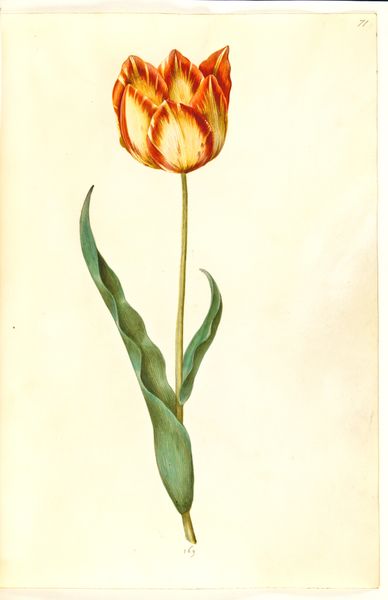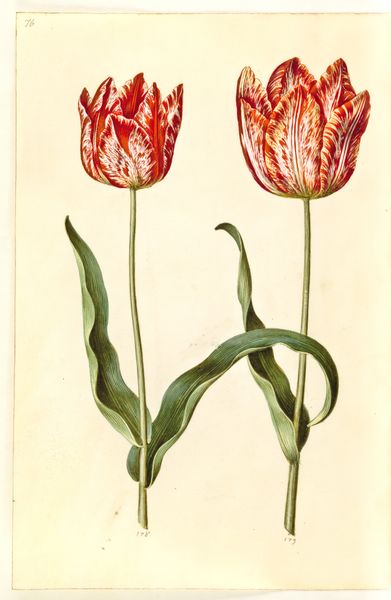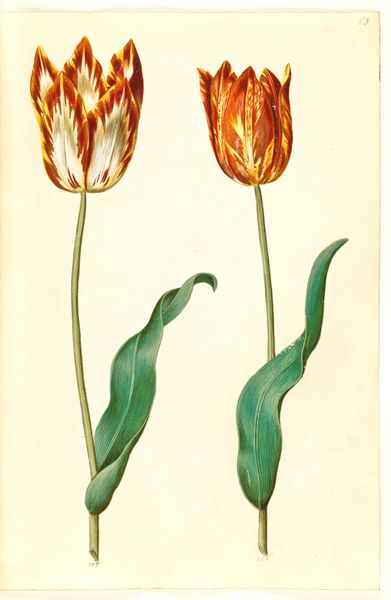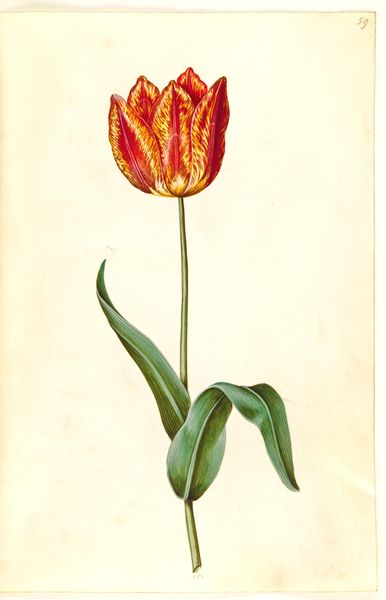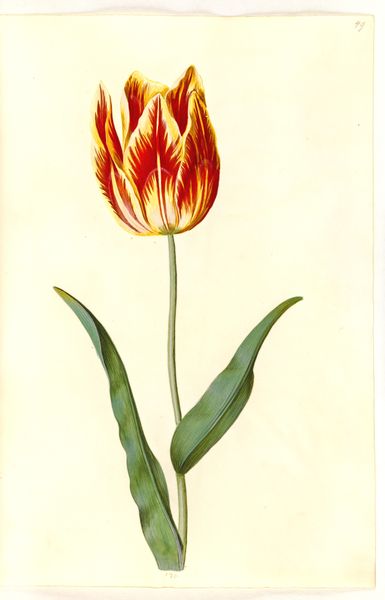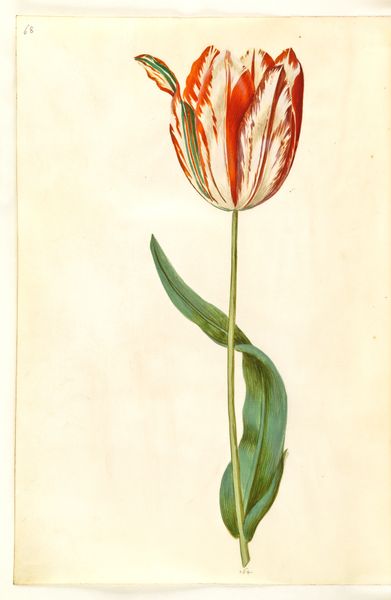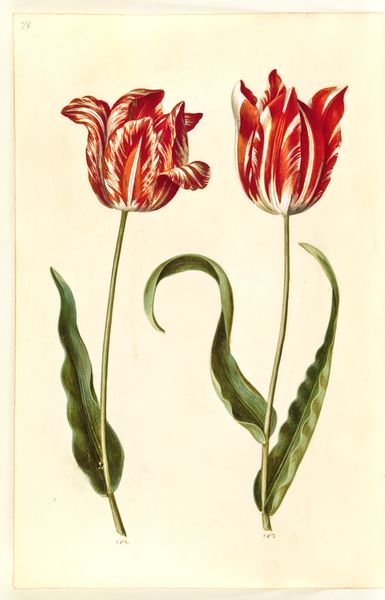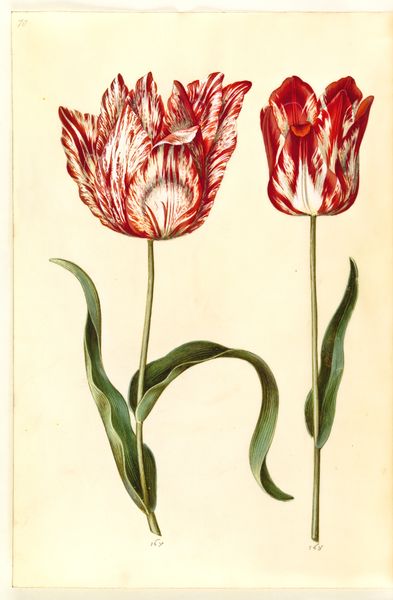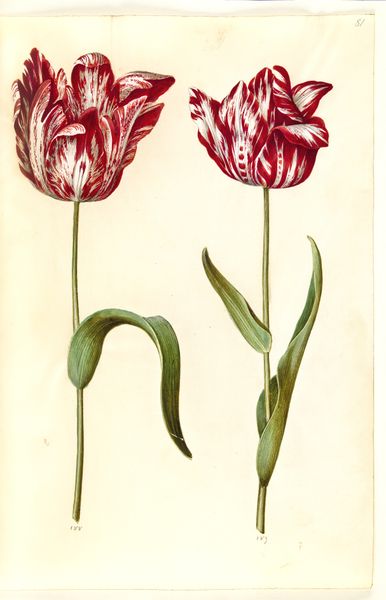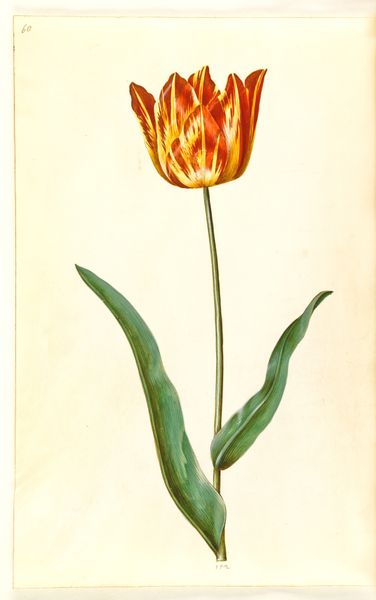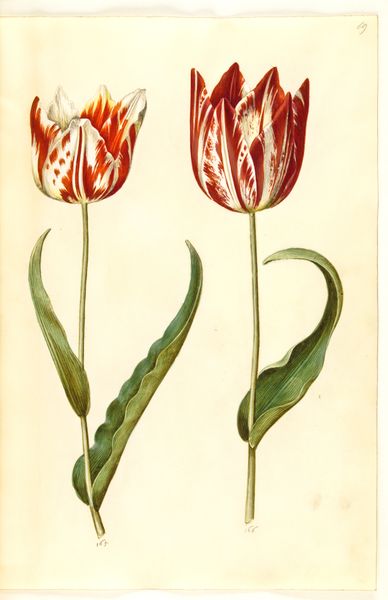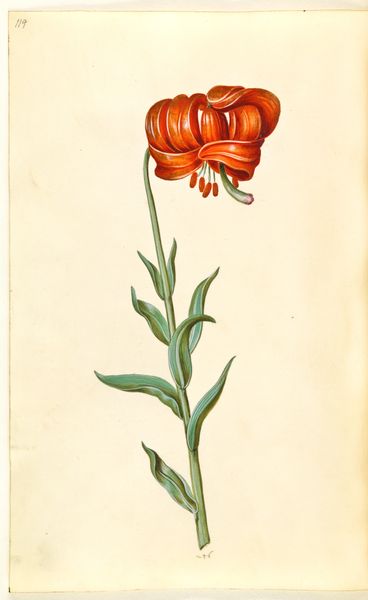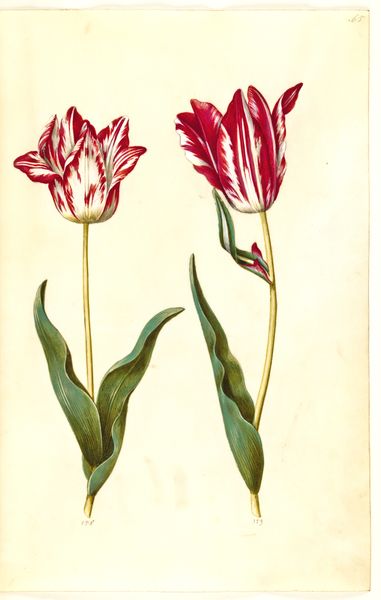
drawing, gouache
#
drawing
#
baroque
#
gouache
#
botanical illustration
#
botanical drawing
#
botanical art
Dimensions: 375 mm (height) x 265 mm (width) x 85 mm (depth) (monteringsmaal), 358 mm (height) x 250 mm (width) (bladmaal)
Hans Simon Holtzbecker captured this Tulipa gesneriana, or tulip, in meticulous detail with watercolour and gouache on paper. The tulip, a symbol of luxury and desire, emerges during the Dutch Golden Age as seen here. Observe how the flame-like patterns on the petals hint at the "broken" varieties, highly prized and financially ruinous during tulip mania. In Ottoman culture, the tulip, or "lale," symbolized perfection and was associated with divine beauty and power, adorning textiles, tiles, and even poetry. The flower’s association with fleeting beauty echoes in vanitas paintings, reminding us of life’s impermanence, an emotional paradox. The tulip's journey from a symbol of imperial power to a speculative commodity speaks volumes about our collective psyche, reflecting our eternal dance with beauty, desire, and the ephemeral nature of existence. Just as the tulip's popularity resurfaced in different eras, its symbolism evolved, continually shaped by human emotions and cultural shifts.
Comments
No comments
Be the first to comment and join the conversation on the ultimate creative platform.

